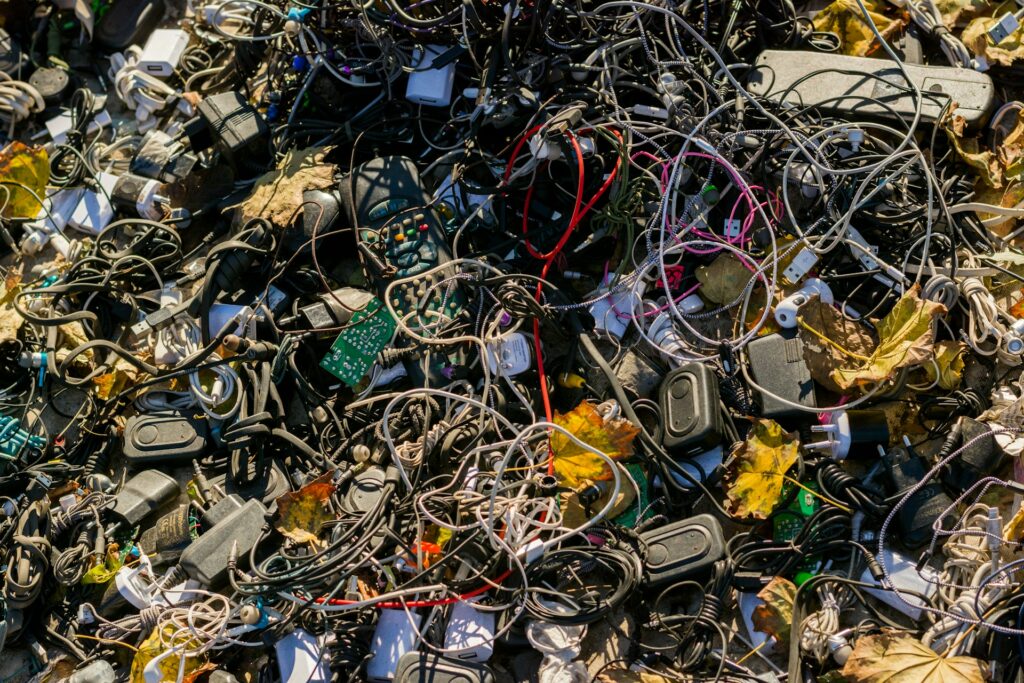Are Biodegradable Electronic Gadgets a Potential Solution to the Problem of Electronic Waste?

Are Biodegradable Electronic Gadgets a Potential Solution to the Problem of Electronic Waste?
We are contributing to a growing catastrophe known as electronic garbage, sometimes known as e-waste, every time we upgrade to a newer phone, throw away an old charger in a drawer, or replace a laptop that has stopped working. In a single year, we produce more than fifty million tons of garbage all over the world, and the most of it is disposed of in landfills, where it releases harmful chemicals into the ground and water. The fact that our gleaming devices include potentially harmful elements such as lead, mercury, cadmium, and polymers that do not biodegrade is something that is easy to ignore. In the event that these materials ever decompose, it will take hundreds of years for them to do so. Furthermore, the issue is only becoming worse as a result of the proliferation of smart devices, which include anything from toothbrushes to toasters.
The development of biodegradable technological devices, on the other hand, offers a ray of hope in an unexpected manner. It is possible that materials that naturally decompose over time might be the solution to the growing issue of electronic trash throughout the globe.
What Exactly Are Biodegradable Electronics?
The term “biodegradable technology gadgets” refers to electronic devices or components of electronic devices that are constructed from materials that organically disintegrate in the environment without leaving behind any hazardous waste. These devices are not constructed from plastics derived from petroleum or heavy metals; rather, they are produced from materials that are organic, derived from plants, or recyclable. Some examples of these materials are mushroom mycelium, bamboo, cornstarch polymers, and even silk proteins.
It is not the intention to replace the complete smartphone with something that can be composted (at least not yet), but rather to focus on components that are often thrown away, such as casings, circuit boards, packaging, and accessories like earphones or chargers. Circuit boards constructed from flax fibers, batteries produced from biodegradable polymers, and even wearable sensors that disintegrate after usage are all examples of what researchers and entrepreneurs are now working on developing. Not only do these materials lower the burden of waste over the long term, but they also reduce the amount of energy that is necessary to produce and recycle other materials.
Why Electronic Waste Is a Growing Problem on a Global Scale
Electronic waste is not only a problem of clutter. It is a significant risk to both human health and the environment. Numerous of our abandoned electronic gadgets find their way to poor nations, where they are disassembled by unofficial recycling sectors without following the appropriate safety measures. Those who work there, who are often youngsters, are subjected to hazardous fumes and chemicals, while the villages that are located nearby suffer from tainted water and air.
In wealthy countries, only a small percentage of electronic trash gets recycled in an appropriate manner. The remainder is either burnt, buried, or piled up, which gradually contaminates ecosystems and contributes to the progression of climate change. It seems inevitable that the cycle will continue as technology becomes increasingly disposable. People are upgrading their devices at a quicker rate, and it is becoming more difficult to fix them.
This culture of disposability requires a revamp, and biodegradable technology is developing as an alternative that is both invigorating and environmentally friendly.
What the Science Says About Electronics That Can Degrade
An idea that is both simple and profound sits at the core of biodegradable technology: design it in such a way that it does not last forever. An effort is being made by engineers to build “transient electronics,” which are components that function well for a certain amount of time and then degrade spontaneously when they are exposed to factors such as water, heat, or bacteria.
Researchers at Stanford University and the University of Illinois, for instance, have developed completely working circuits that, after being used, dissolve in water. Over the course of a few days or weeks, some compounds decompose into harmless byproducts that are not hazardous. In the field of medical technology, these bio-circuits have the potential to be used in providing temporary implants that do not need surgical removal. Cell phone casings, headphone shells, USB drives, and packaging are all examples of consumer technology products that are now undergoing testing for biodegradability. With the advancement of manufacturing technologies and the reduction of prices, it is possible that we will soon see popular electronics in which “end of life” does not imply spending decades in a landfill.
The Obstacles That Are Slowing Down Adoption
There is a lot of enthusiasm about biodegradable technology, but it is still in its early phases. However, the most difficult obstacle is longevity. Despite being subjected to drops, spills, temperature fluctuations, and frequent usage, the majority of electronic devices are supposed to endure for years. In order to be successfully used, biodegradable materials need to strike a careful balance between their strength and their ability to break down after disposal.
The issue of scalability is another obstacle. The production of biodegradable components on a worldwide scale necessitates the establishment of supply networks and manufacturing processes that are not yet completely developed. There is also the issue of cost. While there is a growing demand for environmentally friendly items, the majority of customers continue to base their decisions on price and performance.
Additionally, there is compatibility. In order to operate properly, biodegradable components must be used in conjunction with conventional electrical components, which are not necessarily favorable to the environment. To achieve complete biodegradability, it may be necessary to restructure the whole system, which is something that very few businesses are willing to invest in. In spite of this, progress is being made. Biodegradable innovation is gathering up pace as the amount of pressure that is being put on technology businesses to lower their carbon footprint and solve the issue of e-waste increases.
Companies that are at the forefront of innovation
Certain businesses are already pushing the limits of what is possible. Compostable phone covers manufactured from flax shive and biopolymers are available from manufacturers of technological accessories such as Pela. The Irish company iameco is one of the companies that manufactures computers with casings made of wood and components that are meant to be easily recyclable or broken down.
In the meanwhile, biotechnology entrepreneurs are collaborating with educational institutions to build biodegradable circuit boards, wearable sensors, and even biodegradable drones for the purpose of doing study on the environment. The technologies in question are not only novelties; rather, they are useful tools that have applications in the real world.
Biodegradable and edible materials are becoming more prevalent in the world of packaging, which is a move that is minimizing waste even before the gadget is switched on.
One Step Towards More Eco-Friendly Design of Technology
There is a greater movement toward circular design, which is the concept that things should be built to be reused, mended, or given to nature in a secure manner. The biodegradable gadget movement is a subset of this bigger trend. Not only is it important to create devices that are easily disposable, but it is also essential to reevaluate the way in which we use technology.
What happens to this product after it is no longer useful? is a question that designers are starting to ask themselves as they begin to consider beyond utility. Is there a way that we can include obsolescence into the system? What are some ways that we might change the behavioral patterns of consumers from “newer is better” to “longer-lasting and sustainable is smarter”? It is possible that biodegradable technology may not be able to replace all gadgets in the near future; nonetheless, it is certainly paving the way for the next generation of responsible innovation.
Responsibly Developed Technology That Both Lives and Dies
As we go farther into the digital era, it is necessary for our relationship with technology to undergo a transformation. It is no longer sufficient to possess quicker processors or designs that are more streamlined. The devices of the future need to show compassion for the planet that provides them with electricity.
A look into the future is provided by biodegradable technological devices, which showcase a future in which innovation and sustainability go hand in hand. Even while they are not the only solution to the problem of electronic waste, they are an essential part of the jigsaw. These are the modest but strong ideas that have the potential to transform the whole industry. For example, a phone cover that turns into compost, a circuit that dissolves, and a device that gives back to the environment rather than hurting it are all examples of such concepts.
mainly due to the fact that when our technology is built to vanish in a responsible manner, we all become more mindful of our progress.





